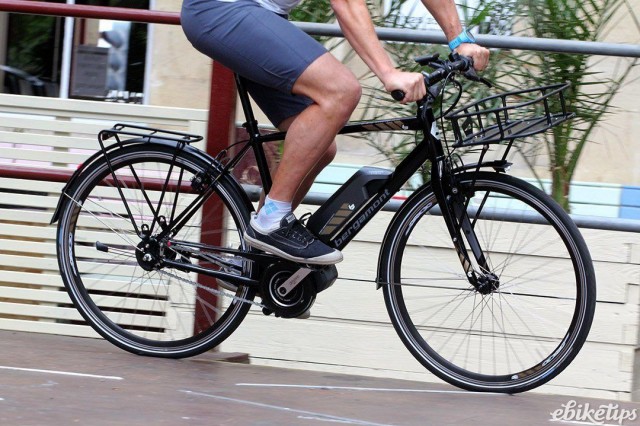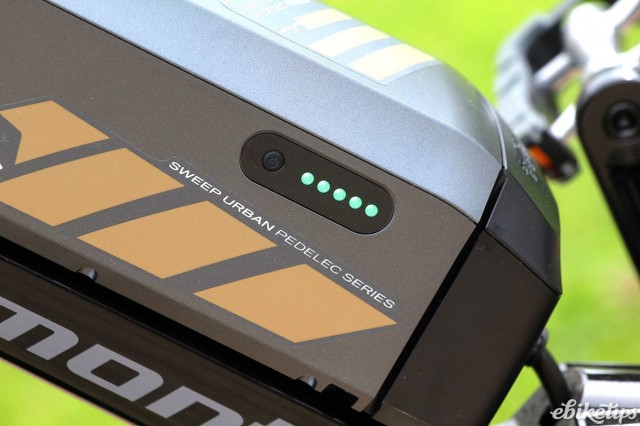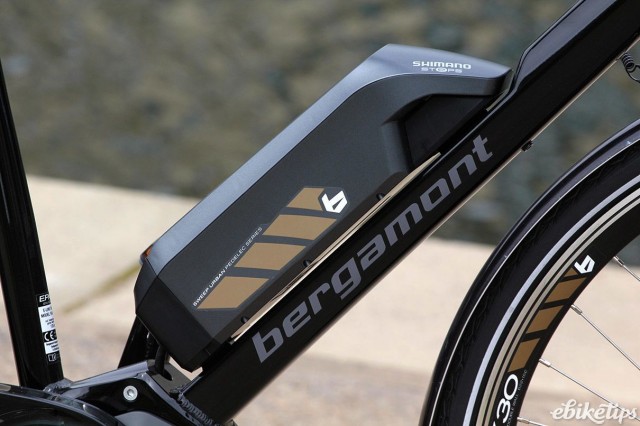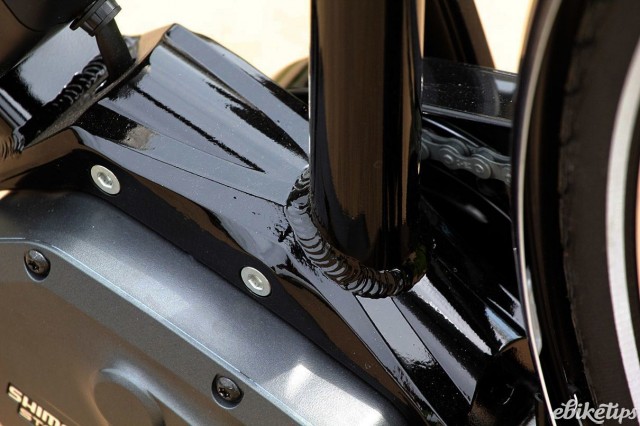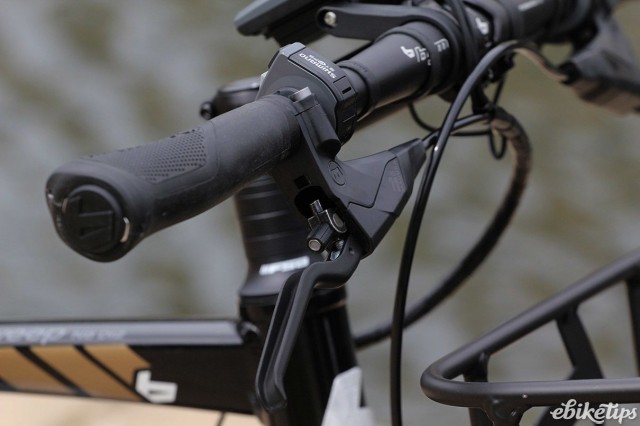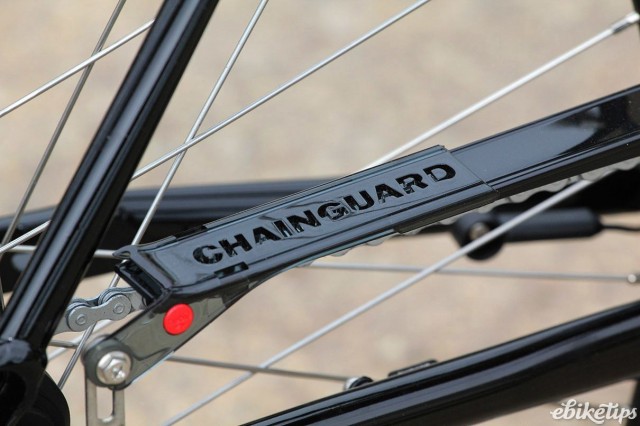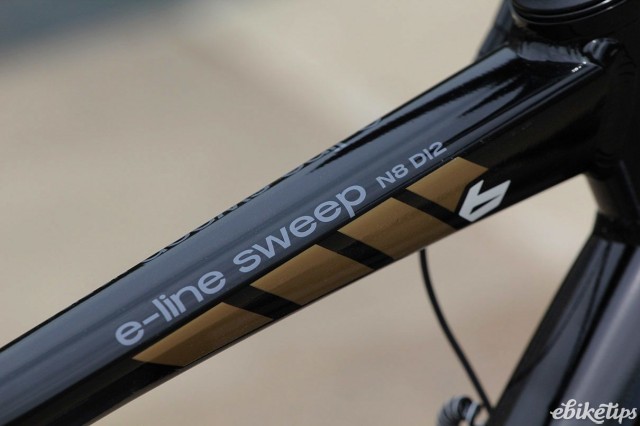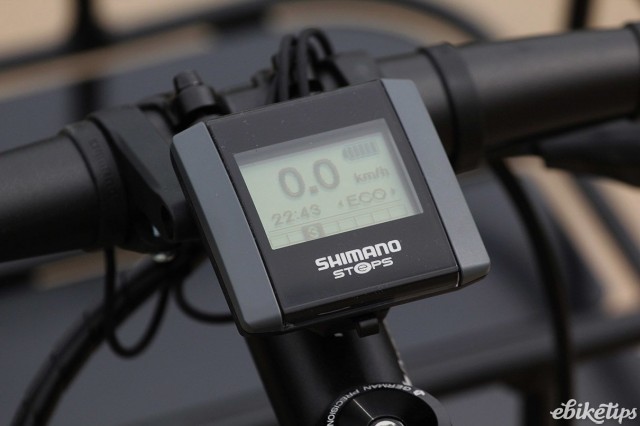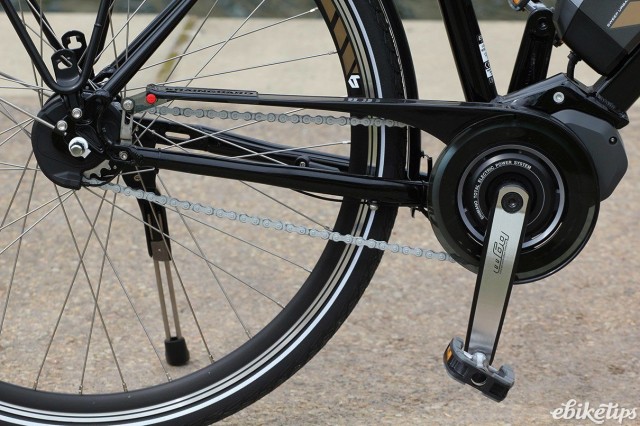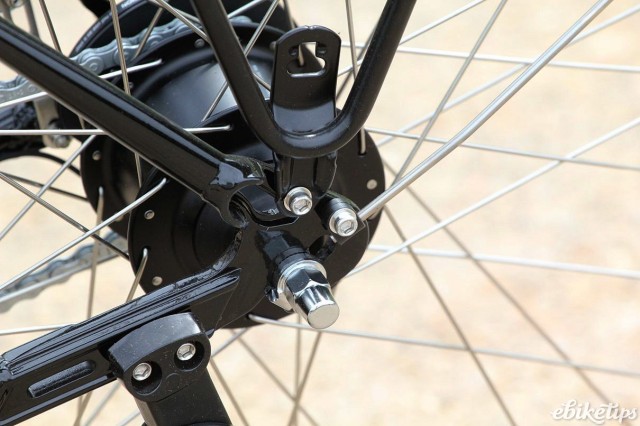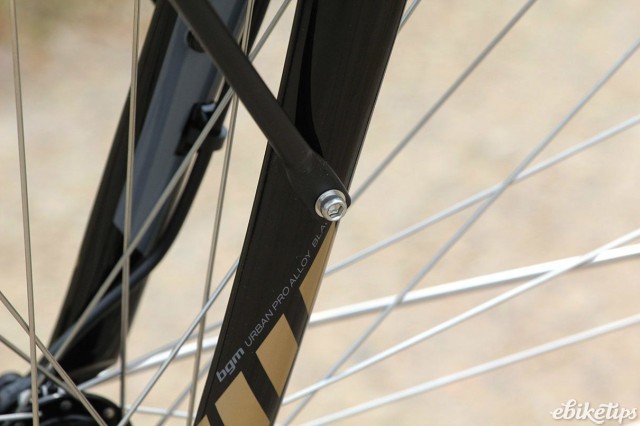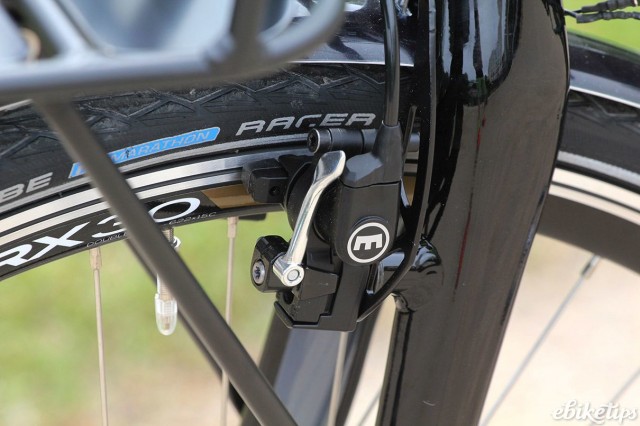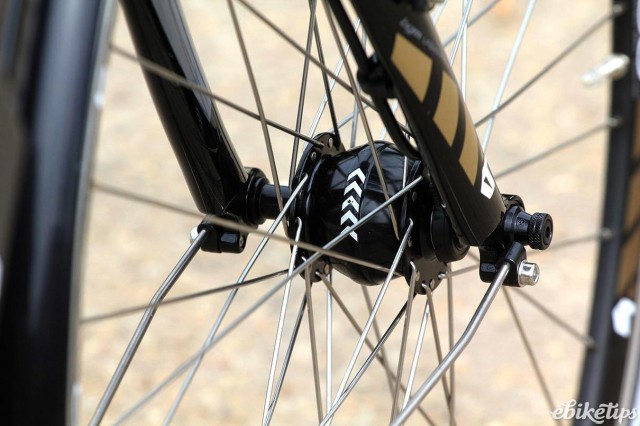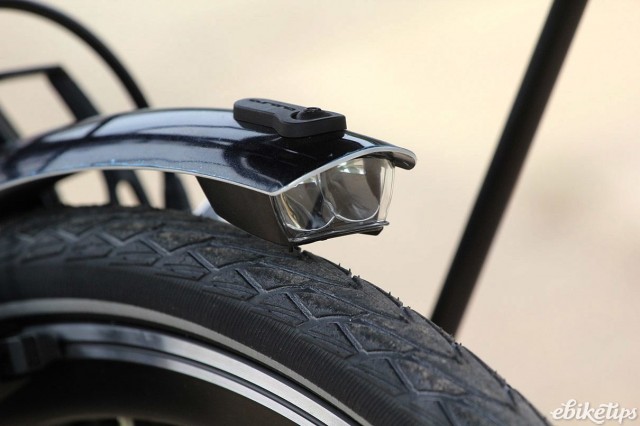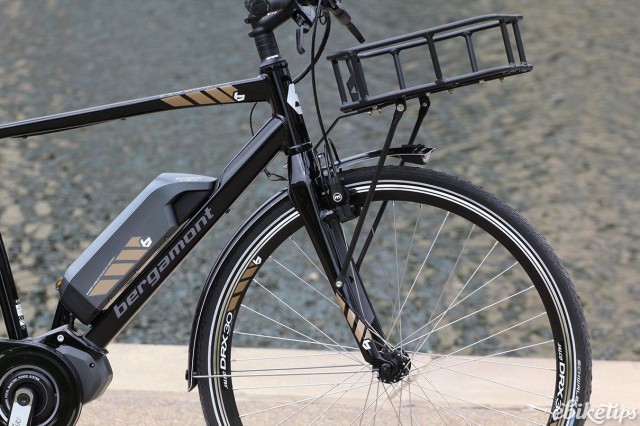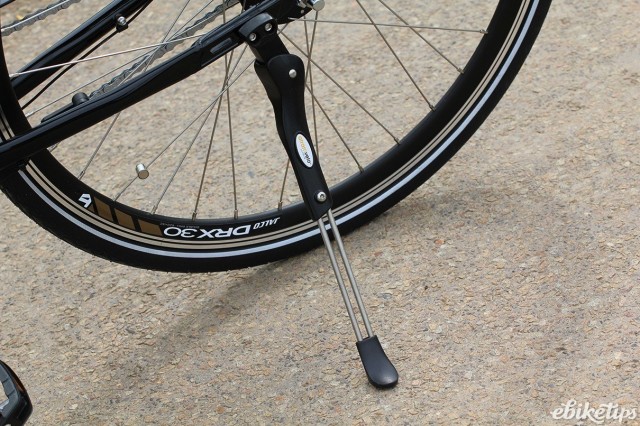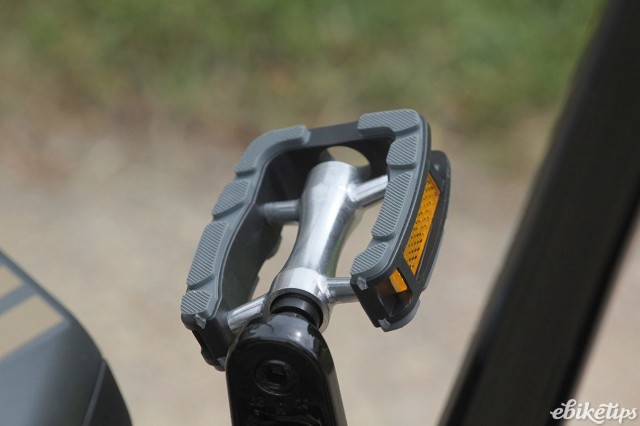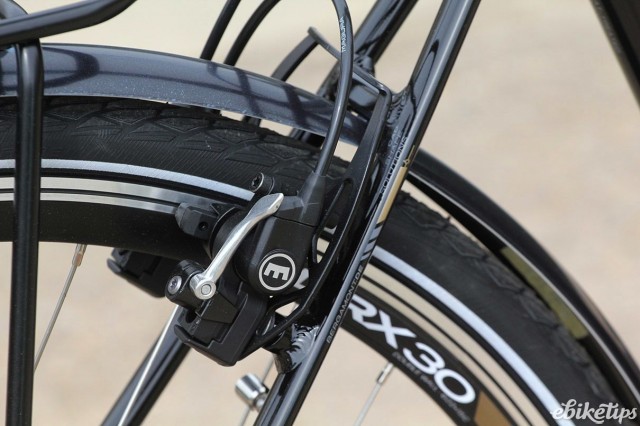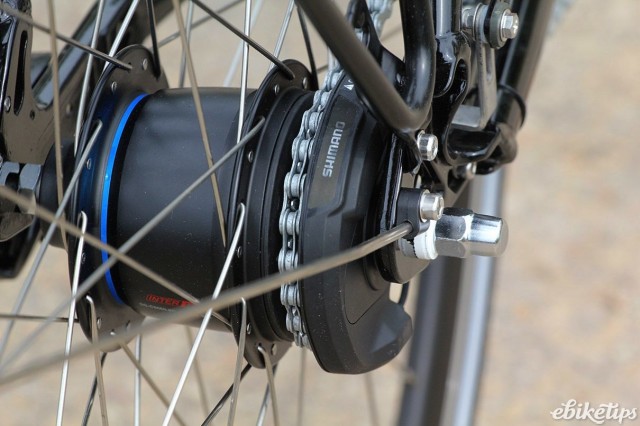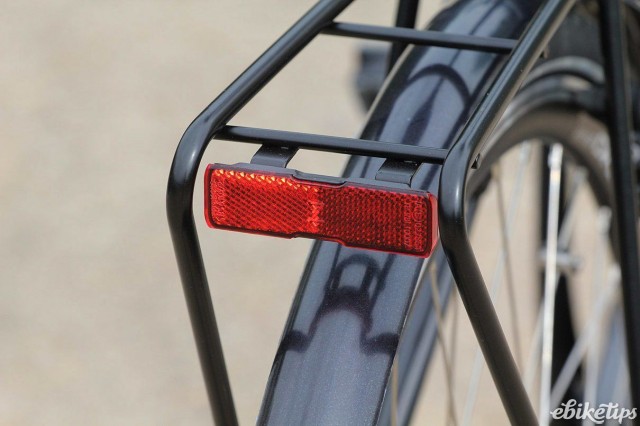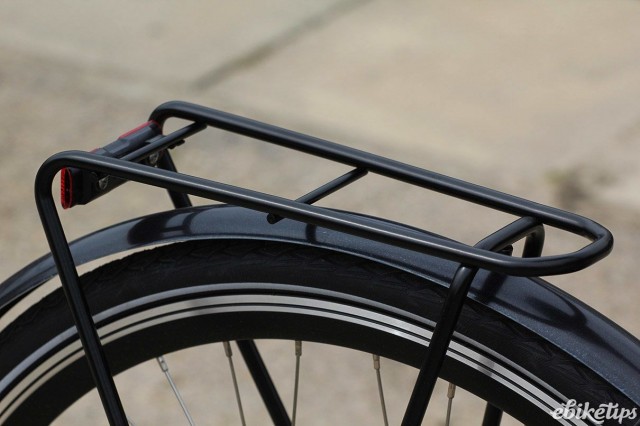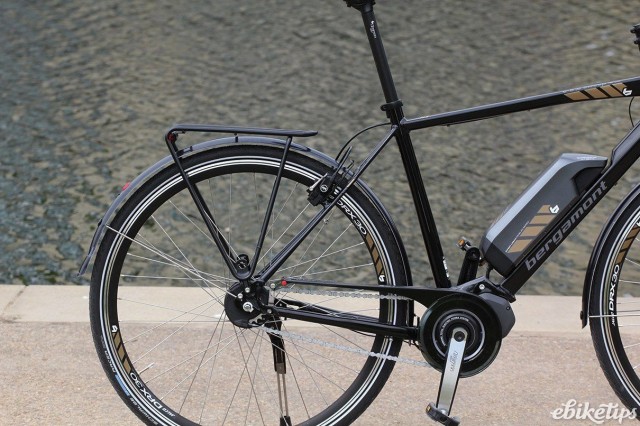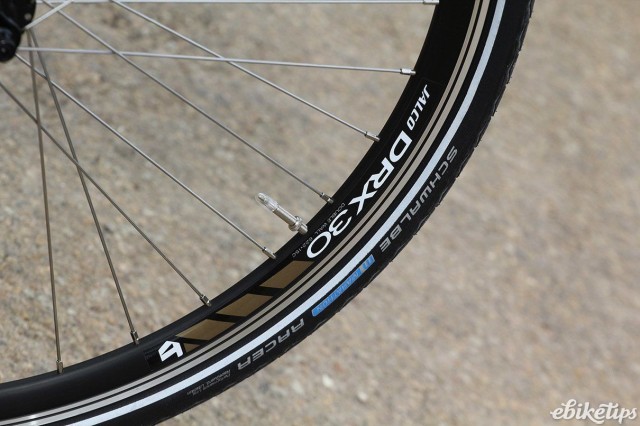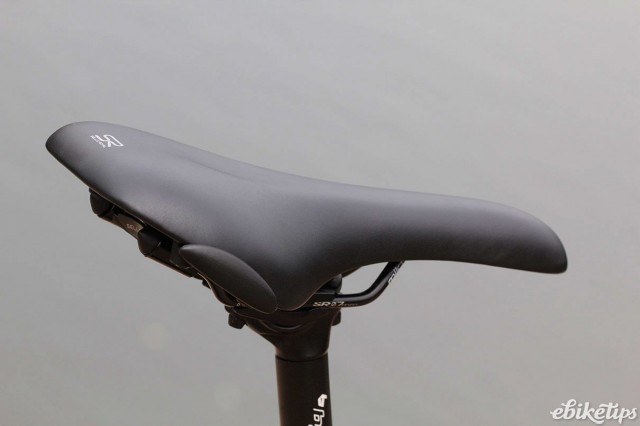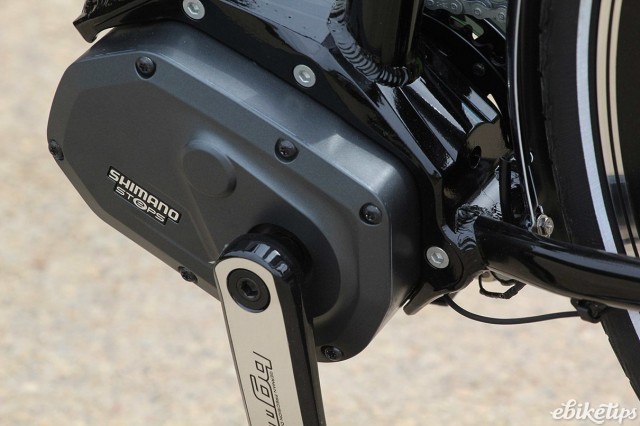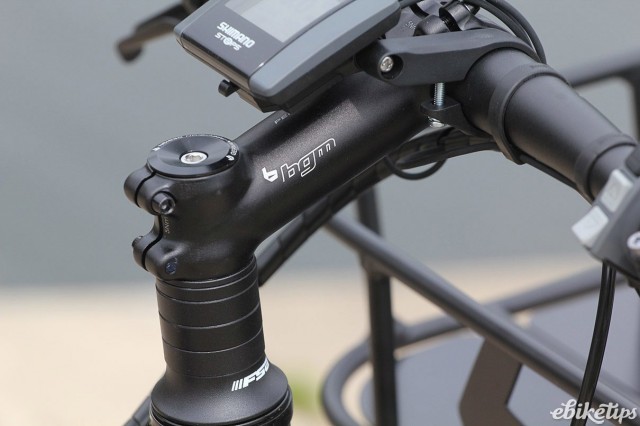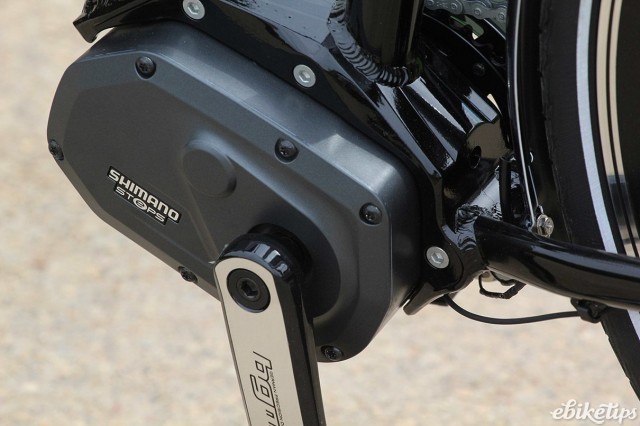Bergamont E-line Sweep N8 Di2
Overview
- Excellent power assistance
- Di2 gears are effective
- Good handling
- STePS motor not as refined as Bosch
- Front rack affects steering
- Hub or disc brakes would be better
Bergamont's E-line Sweep N8 Di2 (hereafter: the Sweep) is a really good quality urban bike from a brand that's huge over on the Continent but just starting to make inroads into the UK. Shimano's STePS bottom bracket drive is excellent and mates really well with the electronically controlled Nexus 8-speed hub, and the rest of the bike is crammed with quality too. It's by no means cheap, but if you're looking for a reliable electric bike to run in place of a second car, it's the kind of thing you need.
You may not have heard of Bergamont, but it's a big deal the other side of the Channel. It has a full range of road, mountain, cyclo-cross, city and kids' bikes; the e-bikes are coming into the UK via the Electric Bike Company and this Sweep nestles in the middle of its range, which runs all the way up to the £3,499 E-Ville Di2.
There are various builds of the Sweep, and the one we tested, with a Di2-controlled Nexus 8-speed hub, is the most expensive. It's available in the same build with a step-through frame.
Like the market-leading Bosch Intuvia, Shimano STePS is a bottom bracket system. The motor unit includes the cranks and it needs a special frame design to be mounted. There are a number of advantages to this setup.
Firstly, the weight of the motor is centralised and low down, so it doesn't affect the bike's handling very much. Secondly, it's not rotating in the wheel so cabling and wheel removal is easier. Thirdly, it makes sensing pedal input a lot easier. The one major downside is that you can't have any regenerative braking for recharging the battery, but as we'll see that's not a major issue here.
You get a centrally mounted display and, on this bike, two satellite controls. One controls the motor and the second is for shifting the Nexus 8-speed hub, which is controlled via Shimano's Di2. Each control has up and down arrows (assist level for the motor, ratio for the hub) and each has a third button which toggles through the various screens on the display. It's a backlit LCD unit and gives you the normal data you'd get from a computer – speed, distance, time – as well as specific motor data (battery level, range, assist level) and a display showing what gear you're in.
The STePS system is pedal-assist only, with a 250W motor (the legal maximum in the EU for a standard e-bike) and a 418Wh Lithium-Ion battery mounted on the down tube. There are three power assist levels: Eco, Normal and High. In Eco mode Shimano claims the battery is good for about 125km of assistance, and as you ask for more help the range decreases. The battery swings out so you can take it indoors to charge it.
It's a really good quality system. The obvious comparison is with the Bosch motor, which works in a similar way and will set you back a similar amount. And they're really very similar. The STePS unit is perhaps a bit more eager: you'll fly up the climbs on this bike, without even breaking a sweat. My commute home has a 3km, 5% climb with the steepest section about 13%, and this bike made it just ridiculously easy. Stick the motor on high, spin the legs and you'll be at the top before you've even registered that you're going uphill.
This bike has a Nexus Di2 hub as well, and the two systems share a control bus and do some clever things together. The Nexus 8-speed hub is a reliable unit but it has a few foibles, one of which is that it's not keen to shift when it's being driven. So, if you apply constant pressure to the pedals and shift it up or down, it'll tend to stay in the same gear until you slack off. The Sweep has a neat trick: when you shift the hub, it cuts the power for half a second or so, enough for the hub to switch ratios, before turning the power back on again. It doesn't work every time – if you're pushing hard on the pedals it can still stick in gear, but generally you're not pushing hard: that's the motor's job.
The other neat trick is that you can set a starting gear. If you pull up to the lights and stop, after a couple of seconds the hub will shift back to the chosen gear on its own. It defaults to third gear, which is just about right.
The gearing overall is about right, in fact. There's not much by way of top-end ratios but this is a bike for cruising around on. It's only assisted up to 25kph and that's as fast as you'll ever really want to go, unless you're pointing its 23kg mass downhill. There are plenty of climbing gears, too; I rarely went below third, but that means there are two more gears for anyone who needs a bit more help, and that's a good thing.
The STePS system isn't maybe quite as refined as the Bosch motor. It's noisier and a little bit choppier under power, especially in the high setting. But overall it's excellent and I've no real complaints. The battery life is similar too. The magic 125km is pie in the sky for anyone who lives near a hill, or weighs more than a schoolgirl. I was averaging about 50-55km. That's doing a lot of climbing, in Normal and High modes, and pootling around on the flat the rest of the time in Eco.
It's not a huge range but realisitically it's unlikely you'd be doing more than that in a day, and if you were you'd probably be doing less hilly stuff than I was, which would eke out your range a bit. More likely you'd be looking at a bike like this as an alternative to a car for town duties, or maybe a 5-10 mile commute, so one every couple of days would see you right. If you did want to extend your range then you can easily sling the charger in a bag. It's not quick to recharge but it'd be long full by the time you'd finished a full day's work, for example.
The rest of the bike is good too
The Sweep matches that excellent drive system with some really good quality kit, and it all fits together into a really nicely considered bike. The Nexus hub at the back is paired with an SP-PV8 dynohub at the front, and the Sweep features Curana C-Lite mudguards with integrated front and rear lights. The front sits under the front edge of the mudguard and the rear is recessed into the 'guard, with the wiring running internally. It's a very neat system and you get always-on running lights for a bit of extra visibility around town. After dark the front isn't quite enough to see by on unlit lanes, but it's fine around town under streetlights, and it's one less thing to remember.
Stopping is courtesy of Magura HS-11 hydraulic rim brakes. They've never really caught on in the UK but you see them everywhere on the Continent. They're powerful and fairly easy to set up and maintain, with the linear brake pad path meaning you get even wear throughout. I'd pick hub gears or discs given the choice on a bike like this, but I had no trouble stopping and the Schwalbe Marathon Racer tyres have plenty of grip.
The Sweep has a 640mm flat bar with ergo grips, which gives you a nice comfy position. If you wanted a more upright ride you could easily switch it out for one with some backward sweep. The Selle Royal saddle I found a bit ordinary but it's fine for shorter journeys.
The Sweep comes with a Porteur rack at the front and a pannier rack at the rear. The rear rack is functional enough and I had no issues with any of the panniers I tried. The front rack looks good but it's less useful, because it's bolted to the fork not the frame and so when you load it up it affects the steering quite markedly. Stick a crate of beer in there and it's easy enough once you're going, but after stopping at the lights you'll need to muscle the bar a bit to keep it straight as you set off. It'd be much better if it was frame mounted.
Generally the ride is good: the stiffness of the alloy frame and fork is mitigated a bit by the 35mm Schwalbe tyres and the good grips, less so by the rather wooden saddle. The steering is reasonably slow but the bike is predictable and stable at most speeds, even barrelling downhill.
Position-wise, I was using the smaller of two sizes that would probably be fine for me, and the larger would have offered a slightly more upright position which, to be honest, I might have preferred. On the flip side the smaller frame meant my wife could ride the Bergamont too, and her experience of it mirrored mine: the STePS system is very good and it's a likeable bike overall. There's a decent stack of spacers for adjusting your bar height, but no adjustable stem like you often see on bikes like this.
Overall: a high-quality e-bike for day-in, day-out use
£2,400 is a big outlay, but if you were running this bike instead of a second car then you'd probably be up on the deal after less than two years. There's minimal maintenance needed on a hub-geared bike like this and it costs pennies to charge the battery up overnight, so running costs are next to nothing.
Not everyone wants to use their commute to hone their fitness; there are lots of people for whom a bike would be the ideal way to get around on a day-to-day basis if it was a bit easier. Take my home town, Bath, as an example: it's only a couple of miles into the centre so cycling would be perfect, if only half the city wasn't up a series of massive hills. This bike makes it easy, wherever you live and whatever your level of fitness, and you can cycle in just because it's easy to park and you don't get stuck in traffic, and you don't have to worry about arriving a sweaty mess.
